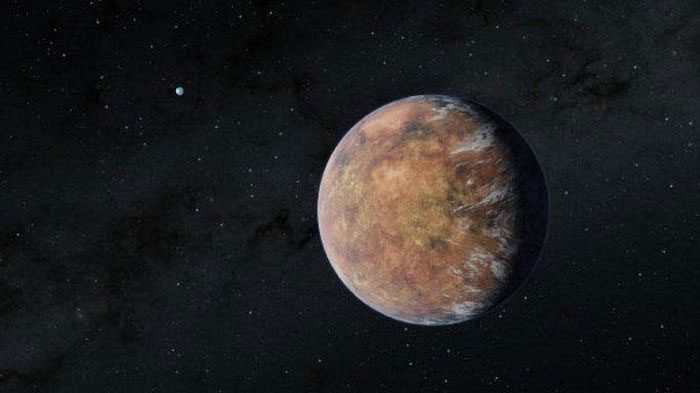The American Space Agency (NASA) has announced a discovery of an exoplanet located 100 light-years away from Earth, situated in a potentially habitable zone.
The planet, named TOI 700 e, is likely a rocky body with a size comparable to 95% of Earth and is the fourth celestial body orbiting the dwarf star TOI 700. It was discovered by NASA’s Transiting Exoplanet Survey Satellite (TESS), according to a report presented at the 241st meeting of the American Astronomical Society in Seattle on January 10.
Another planet in the system, discovered in 2020 and named TOI 700 d, is also Earth-sized. Both TOI 700 d and e are located in the habitable zone of the star, meaning they are at a suitable distance where liquid water could exist on their surfaces. The potential for liquid water indicates that these planets may currently support or may have once supported life.
“This is one of the few systems with multiple small planets in the habitable zone that we know of. This makes TOI 700 an interesting target for further observation. The planet TOI 700 e is about 10% smaller than TOI 700 d, so this discovery also shows how additional TESS observations help us find new, smaller worlds,” said lead author Emily Gilbert, a postdoctoral researcher at NASA’s Jet Propulsion Laboratory in California.

Simulation of the exoplanet TOI 700 e. (Image: NASA/JPL-Caltech/Robert Hurt)
Small, cool dwarf stars like TOI 700 are common in the universe, and many of them have been observed to host planets in recent years, such as the TRAPPIST-1 system, which has 7 exoplanets discovered in 2016 and 2017.
Within the TOI 700 system, TOI 700 b is the closest planet to the star. It is about 90% the size of Earth and completes an orbit around the star every 10 days. Next is TOI 700 c, which is 2.5 times larger than our planet and completes an orbit every 16 days. Both of these planets are likely tidally locked, meaning they always show the same face to the star, similar to how one side of the Moon always faces Earth.
The two remaining exoplanets, TOI 700 d and e, are in the habitable zone with longer orbital periods of 37 and 28 days, respectively, as they are located a bit farther from the star. The newly announced planet TOI 700 e sits between TOI 700 c and d.
Operational since 2018, TESS scans a large portion of the night sky continuously for 27 days, focusing on the brightest stars and monitoring their brightness variations. These brightness dips indicate the presence of planets as they pass in front of the star, a phenomenon known as a transit. TESS began observing the southern sky in 2018 before moving to the northern sky. In 2020, the mission returned its focus to the southern sky for further observations, leading to the discovery of the fourth planet in the TOI 700 system.
“If the star were a little closer or the planet a bit larger, we might have discovered TOI 700 e in the first year of the mission. However, the signal was too faint, necessitating additional transit observations to confirm it,” added co-author Ben Hord, a PhD student at the University of Maryland.
- Decoding the little-known technique that helped Landmark 81 construct rapidly in over a year, while the VinFast complex only took 18 months
- Chilling moment when two girls are chased and attacked by a leopard
- Investment venture that made the writer wealthy for life: Playing “peekaboo” with the entire French lottery system to win the jackpot


















































